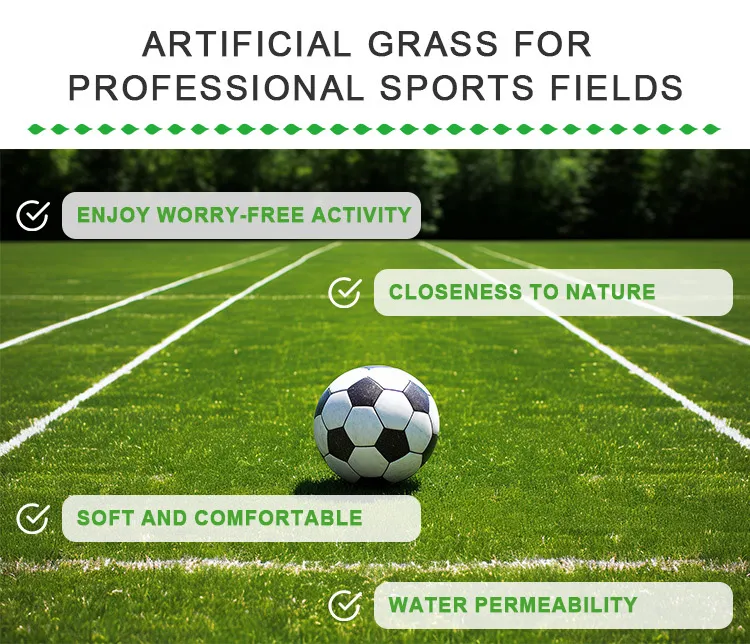
- Afrikaans
- Arabic
- Belarusian
- Bengali
- Czech
- Danish
- Dutch
- English
- Esperanto
- Estonian
- Finnish
- French
- German
- Greek
- Hindi
- Hungarian
- Icelandic
- Indonesian
- irish
- Italian
- Japanese
- kazakh
- Rwandese
- Korean
- Kyrgyz
- Lao
- Latin
- Latvian
- Malay
- Mongolian
- Myanmar
- Norwegian
- Persian
- Polish
- Portuguese
- Romanian
- Russian
- Serbian
- Spanish
- Swedish
- Tagalog
- Tajik
- Thai
- Turkish
- Turkmen
- Ukrainian
- Urdu
- Uighur
- Uzbek
- Vietnamese
fake grass too hot for dogs
Dec . 07, 2024 09:38 Back to list
Is Fake Grass Too Hot for Dogs? Understanding the Risks and Benefits
In recent years, synthetic turf has gained popularity among homeowners seeking an aesthetically pleasing, low-maintenance alternative to natural grass. However, an important consideration for pet owners using fake grass is whether it becomes too hot for dogs, especially during the warmer months. This article will explore the implications of synthetic grass on your furry friends, the potential risks associated with high temperatures, and how to ensure a safe environment for your pets.
Understanding Synthetic Turf
Synthetic grass, made from durable materials like polyethylene or polypropylene, mimics the look and feel of natural grass. It requires minimal upkeep, eliminating the need for regular mowing, watering, or fertilizing. While these benefits make synthetic turf appealing, concerns have arisen regarding its heat retention properties. In sunny conditions, the surface temperature of artificial grass can rise significantly higher than natural grass, posing a risk to pets that may walk or play on it.
The Temperature Factor
Studies have shown that the surface temperature of synthetic grass can easily exceed 100 degrees Fahrenheit (38 degrees Celsius) on a hot summer day, with certain low-quality materials heating up even more. For comparison, natural grass typically stays around 70 to 80 degrees Fahrenheit (21 to 27 degrees Celsius), providing a much cooler surface for dogs to enjoy. This stark contrast raises concerns about the safety of pets on artificial turf, particularly for breeds that are more prone to overheating.
Risks of Overheating
Dogs, unlike humans, do not sweat through their skin; instead, they rely on panting to cool down. When exposed to extremely hot surfaces, dogs can easily overheat, leading to heat exhaustion or even heat stroke—potentially life-threatening conditions. Symptoms of heat-related illnesses in dogs include excessive panting, drooling, weakness, high heart rate, and in severe cases, loss of consciousness. As responsible pet owners, it is crucial to monitor your dog's behavior and environment, especially on scorching days.
Tips for Dog Owners
fake grass too hot for dogs

1. Temperature Check Before letting your dog play on synthetic grass, test its surface temperature by placing the back of your hand on it for a few seconds. If it feels uncomfortably hot for you, it likely is for your dog too.
2. Limit Playtime On particularly hot days, consider restricting your dog's playtime on synthetic surfaces. Opt for morning or evening walks when temperatures are cooler, and allow them to enjoy grass or shaded areas.
3. Provide Fresh Water Ensure your dog has access to fresh water at all times, especially during outdoor play. Hydration is key to preventing overheating.
4. Create Shade If your yard features synthetic grass, consider installing shade structures or planting trees to provide cooler areas for your dog to retreat to during peak sun hours.
5. Choose Quality Materials If installing synthetic grass, invest in high-quality, heat-resistant options. Some brands are specifically designed to reflect heat, which can help mitigate temperature issues.
6. Monitor Your Dog Always keep an eye on your dog’s behavior. If they seem lethargic, disinterested, or are panting excessively, it’s a sign they may be overheated and should cool down.
Conclusion
While synthetic grass provides numerous conveniences for pet owners, it does present some concerns, particularly regarding heat retention. By taking proactive measures, such as monitoring surface temperatures and providing shaded areas for your pets, you can mitigate risks associated with synthetic turf. It’s essential to create a safe outdoor environment where your dog can enjoy playing, regardless of the surface they are on. Remember, ensuring your dog’s comfort and health ought to be the top priority, even in pursuit of a beautiful lawn.
-
The Benefits of Artificial Turf for Indoors
NewsJul.15,2025
-
How Artificial Grass Suppliers Ensure Quality Products
NewsJul.15,2025
-
Artificial Grass and Pets: A Space for Relaxation
NewsJul.08,2025
-
Balcony & Outdoor Decoration with Artificial Grass
NewsJul.08,2025
-
Best Indoor Artificial Grass for Home
NewsJul.07,2025
-
Best Pet Turf for Dogs: Safe & Durable Artificial Grass Options
NewsJul.07,2025
Products categories









